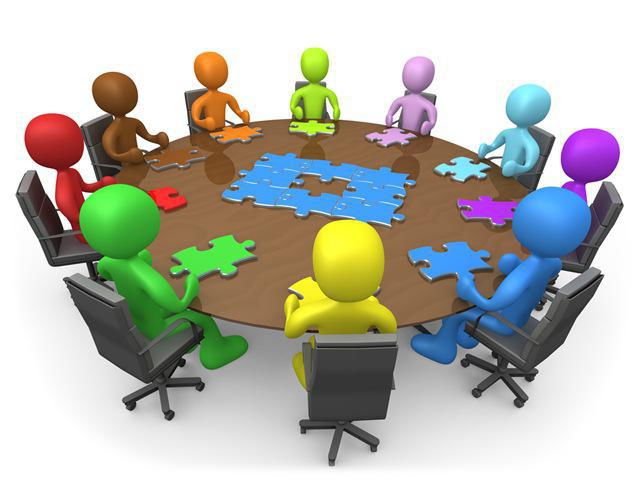Personnel motivation is an effective system of methods for increasing labor productivity.
The concept and essence of the term
Pesonal motivation includes a set of stimuli that determine the behavior of a particular individual. Therefore, this is a certain set of actions on the part of the head aimed at improving the working ability of employees, as well as ways to attract qualified and talented specialists and their retention.

Each employer independently determines the methods that encourage the whole team to be active in order to meet their own needs and to achieve the overall goal.
A motivated employee takes pleasure in work, to which he is attached to his soul and body, and experiences joy. This cannot be achieved by force. Recognition of achievements and encouragement of employees is a difficult process that requires taking into account the quantity and quality of labor, and all the circumstances of the emergence and development of behavior motives. Therefore, it is extremely important for the leader to choose the right motivation system for subordinates, and each requires a special approach.
Personnel motivation system: concept, development
This is a set of measures aimed at the internal values and needs of subordinates, stimulating not only the work as a whole, but first of all, diligence, initiative and the desire to work. And also to achieve the goals in their activities, to improve the professional level, and to increase the overall efficiency of the enterprise.
The personnel motivation system consists of two components.
Compensation system
It includes the following components:
- Remuneration of labor.
- Disability benefits.
- Employee insurance.
- Overtime pay.
- Compensation for loss of space.
- Payment equivalent to income received.

Consider another component.
Non-compensation system
It includes such methods:
- Improving the mental state and mood, various complexes of programs for advanced training, intelligence, erudition, self-improvement.
- Activities aimed at improving self-esteem and self-esteem, at the satisfaction of their work.
- Cohesion and promotion of the team through the conduct of cooperatives.
- Setting goals and objectives.
- Control over their implementation.
- An offer to take a leading position.
These methods do not involve any payouts.
Steps to introduce a motivation system in a company
- Setting goals and objectives, defining a clear mission of the enterprise.
- Organization of a working group.
- Work on a plan to implement a staff incentive system.
- His statement.
- Development of reward programs for achieving set goals.
- Creation of the above personnel motivation systems.
- Preparation of documentation.
- The introduction of motivational measures and the necessary adjustment.
- Analysis of the work of subordinates of the enterprise.
This system needs to be introduced gradually so that workers are not afraid of the upcoming changes, but can get used to them, find positive aspects and increase labor efficiency.
Types of staff motivation
Material. It provides for remuneration in monetary terms, in the quality of services and tangible objects. It is applicable to one employee or group, to the whole organization is extremely rare, because it is considered an ineffective method.
Intangible.The employee receives emotional benefits, this elimination of complexes, peace of mind, recognition of their own merits, etc. It is applicable to one employee, and the entire team, as it helps to shape the attitude of each individual to the organization.
Positive motivation is characterized by the use of positive incentives.
Negative motivation is based on negative incentives.
External. Favorable or disapproving impact on personnel, which leads to the desired result. As a reward, it is presumed good or punishment;
Inner. It involves the independent development of employee motivation. The implementation of certain tasks brings them moral satisfaction. But at the same time, staff can remain in search of benefits. External motivational leverage with internal motivation is not enough to obtain the desired good.
External motivation of personnel is designed to develop and activate internal motivation. This can be achieved by constantly evaluating the methods used, as well as using special methods.
Motivation and incentives of staff: what are their differences
Labor motivation is the motivation of an employee to work effectively. And stimulation is an external impact on a specialist in order to make him work even better, to increase his productivity.
Examples of staff motivation
Examples of such management actions are:
- Six employees who have the best results for the work performed according to the results summed up for the quarter will be awarded a double salary bonus.
- Photos of the best employee will be posted on the board of honor of the enterprise;
- A salary allowance of 2% of personal sales is provided.
Now we begin to consider another term.
Incentive Examples
A completely different approach has already been noted here. For example:
- Whoever does not fulfill the implementation plan this month will be deprived of a bonus.
- You will not leave the workplace until you close the annual report.
- Who does not like the working conditions, you can put a letter of resignation on the table, there are no irreplaceable people.
The examples show that the motivation and stimulation of staff is like the folk method of “carrot and stick”. This means that motivation awakens the employee’s inner desire to work, and stimulation makes him work if there is no such desire.
But the emphasis on stimulation is still not worth it, because most people hate their work precisely for this reason and are forced to remain because of hopelessness. In some cases, it can be used if the subordinate does very poorly with his direct duties.
Often, employers resort to stimulation because it does not require costs, and even easier. But workers from this method arrive in a state of stress. The consequence of this is poor working ability and frequent layoffs, which leads to staff turnover, and this is a big minus for the enterprise.
Therefore, it is necessary to combine these methods, but the emphasis should be on motivation. Then the manager will be able to create an efficiently working harmonious team, whose employees will fight in the conditions of healthy competition.
The main groups of motivation methods
Methods of personnel motivation are divided into two groups. It:
- Material motivation (monetary reward).
- Intangible motivation of staff.
To avoid the problem of dismissal of qualified personnel, staff motivation should include different methods and intangible ones as well.
In each group, you can consider mainly important methods of staff motivation:
- Reward system. These are bonuses, various allowances, bonuses, etc. The employee understands that the more conscientiously and better he will fulfill his duties, the greater the reward for this;
- The system of fines.For poorly done work on the basis of the worst results, the subordinate is punished with a fine.

Intangible motivation
It includes a wider range of methods:
- Growth on a career ladder. The employee tries to work better than the rest in order to obtain the desired promotion in the post, which means an increase in remuneration and a different status.
- Good atmosphere in the team. A close-knit team serves as additional motivation for effective labor productivity.
- Employment and a full social package, according to the current Legislation, are a significant aspect in finding a job, and when getting it, good motivation.
- Organization of cultural and sports events. As a rule, a joint pastime of the entire team promotes cohesion and a good working microclimate, and also provides an excellent opportunity for high-quality rest and relaxation.
- The prestige of the enterprise. Work in a company whose name is well known to everyone will also serve as an incentive for productive cooperation;
- Possibility of training at the expense of the enterprise. This is a great chance to improve the skill level.
- Approving word from the head. The praise of the manager is expensive. Companies still use actual honor boards and virtual ones on the company's official websites for this purpose.
The list can be replenished further. But each manager nevertheless selects methods that are appropriate for the business in order to achieve maximum success with minimal costs.
Forms of staff motivation
These include:
- Wage.
- The system of benefits within the enterprise: bonuses, bonuses for seniority, payment of travel to work and back, health insurance and so on.
- Moral encouragement of subordinates.
- Professional development of workers and career advancement.
- The development of trusting relationships between colleagues, the elimination of psychological and administrative barriers.
Motivation of personnel is a very important aspect for any manager, if he is interested in the fact that employees work with the greatest return. And those, in turn, have different goals and visions of working for the company: one is only interested in money, the other is a career, the third is a different aspect. And the leader is racking his brains on how to arouse interest among workers.
However, as a rule, not all entrepreneurs and managers have experience in implementing the system described above. Therefore, the search for suitable ways of effective motivation takes a lot of time and occurs through trial and error.
A competent and highly qualified staff is half the success of any organization. It often happens that in the first two months a new specialist tries and burns with a great desire to work, although he has little experience and knowledge. And having owned them and having passed the probationary period, he becomes lazy and less active.
This suggests that any staff is inherent in one pattern - a periodic decline in motivation, and therefore a decrease in the efficiency of workers. Managers who own such weapons as managing staff motivation can not only notice the fading interest of subordinates to work in time, but also respond with lightning speed and take appropriate measures.
Each person needs an individual approach, you need to know which psychotype he belongs to. And socionics, the concept of personality types and the relationships between them, will help to understand this.
This science allows you to find out how a person thinks, how he perceives information and how he will act in a given situation. It helps determine the compatibility of people in a team. And at the same time and more competently to study such a question as staff motivation.
Socionics
Socionics has a clear characteristic of all types of intelligence, and also describes the possible patterns of behavior of these types in the business environment and divides them into four groups (the main stimulus):
- Prestige (power, status). People from this group are striving for growth on the career ladder and recognition of others. This is their main goal. If the head does not plan vertical promotion of employees, he can be transferred to an adjacent, more interesting position, thereby a person will receive moral satisfaction from assessing his importance in the company.
- Uniqueness (recognition of merits, an exciting lesson). People from this stimulus group cannot stand monotonous work, they are capable of more. New technologies and a free schedule are the perfect motivation for them for fresh ideas and projects, discoveries or inventions. Willingly increase their qualification level and become irreplaceable specialists.
- Well-being. People of this type seek to satisfy their own desires. The best method of personnel management for them will be the conviction that their interests with the company coincide one hundred percent. Confirmation of this will be the provision of all kinds of soft loans, for example. They love to receive new knowledge and willingly share it with others. Out of these specialists come out wonderful consultants.
- Self-sufficiency (safety). For people in this group, comfort in life and well-being are important. The favorable atmosphere and the convenience of the workplace, plus good pay and the provision of a full social package for them is the best method of managing staff motivation.
If TIM is correctly and precisely defined (type of “informational metabolism”, sociotype), there is no doubt which group the employee belongs to, you can choose the necessary incentives that will work productively for a long time.
Of course, the general incentive system for all employees of the organization through the prism of socionics seems to be ineffective. Four is the minimum number of motivation methods; for a large company there should be sixteen of them (according to the number of TIMs). And with all this, money is the most universal incentive.
Today, the labor market has a shortage of qualified specialists. And for the successful development of the company, a stable effective team is needed. All of the above tools for staff motivation will help the manager to know the goals of each employee, to solve the problem of staff turnover. It will also save valuable time and money on the search and adaptation of new specialists, as well as help to form a strong reliable team of professionals and like-minded people.



